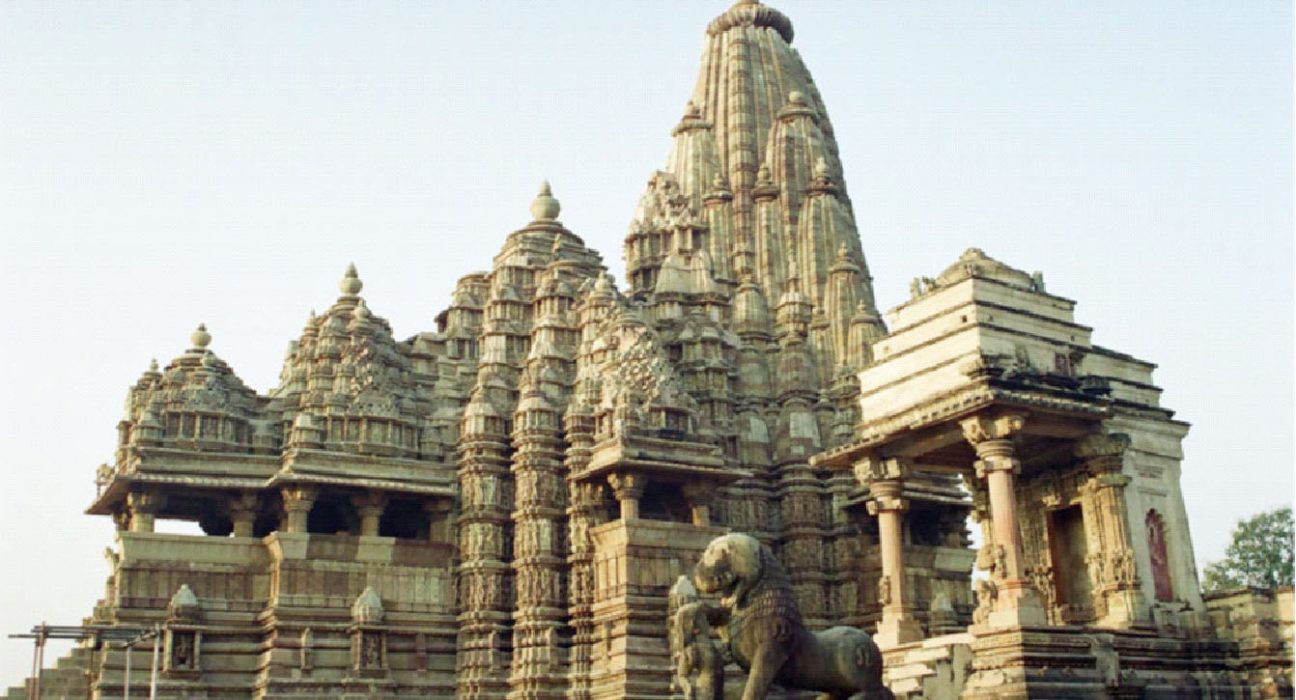The Sacred Geometry in Indian Temple Architecture

Indian temple architecture is not merely about aesthetics but reflects a deep philosophical connection with the cosmos, the divine, and the universe. One of the most intriguing aspects of this architecture is the concept of sacred geometry, which guides the design and layout of temples, ensuring they are in harmony with natural and cosmic forces. This sacred geometry is embedded in the principles of Vastu Shastra, the ancient science of architecture in Hinduism, and it plays a crucial role in creating spaces that are spiritually uplifting and conducive to meditation and worship.
The Concept of Sacred Geometry in Hindu Temples
Sacred geometry refers to the use of geometric shapes and proportions to represent cosmic laws and spiritual truths. In Hindu temples, the design is often centered around geometric patterns that symbolize divine order and unity. The main temple structures—especially the garbhagriha (sanctum sanctorum) and the shikhara (spire)—are carefully designed to align with cosmic principles, drawing the devotee closer to the divine presence during worship.
The temples are designed to reflect the cosmic order, symbolizing the relationship between the material and the spiritual realms. The space inside the temple is meticulously designed to guide the mind towards spiritual focus and enlightenment. The geometry used in temple design is based on ancient texts, which define proportions, symmetry, and alignment to create an environment that elevates the spiritual experience.
Key Elements of Sacred Geometry in Temples
- The Mandala: A crucial geometric shape in temple design is the mandala, a circular figure representing the universe. The floor plan of many temples, especially the pradakshina path (circumambulatory path), is based on mandalic principles. The shape signifies wholeness and unity and provides a visual aid to meditative practices.
- The Square and Circle: The intersection of the square and circle in Hindu temple designs symbolizes the union of the physical and metaphysical worlds. The sanctum sanctorum, where the deity is enshrined, is often square-shaped, representing the earthly realm, while the dome or spire above the sanctum is circular, symbolizing the divine.
- The Golden Ratio: Many temples also incorporate proportions related to the golden ratio, a mathematical ratio often associated with beauty and harmony. The use of this ratio ensures that the temple resonates with a natural and divine order, promoting balance and symmetry in the environment.
Vastu Shastra and Sacred Geometry
The principles of sacred geometry are rooted in Vastu Shastra, the ancient Hindu system of architecture. Vastu Shastra dictates that temples be constructed according to specific geometrical and directional guidelines to ensure positive energy flow. The alignment of the temple with cardinal directions (north, south, east, and west) is crucial, as it is believed that proper orientation enhances spiritual energy and brings prosperity and peace.
The sanctum sanctorum of the temple, where the primary deity resides, is always placed at the center of the temple complex. This central placement is symbolic of the cosmos, with the deity representing the center of the universe. Surrounding this sanctum, the temple walls are adorned with intricate carvings and designs that reflect the divine order through sacred geometry.
Influence on Temple Design and Structure
Sacred geometry has had a profound impact on the structure of temples, influencing not only their floor plans but also their elevations, spires, and inner sanctums. The Shikhara (temple spire) is a critical element, representing Mount Meru, the mythical mountain at the center of the universe in Hindu cosmology. Its design is often based on intricate geometric shapes and proportions.
Temples also make use of asymmetry, where deviations in symmetry are used purposefully to create an effect of dynamism and to indicate the presence of divine energy. This complexity in design serves both a spiritual and artistic purpose.
Examples of Sacred Geometry in Iconic Temples
- The Brihadeeswarar Temple: Located in Tamil Nadu, this UNESCO World Heritage site features a massive dome, a key feature of sacred geometry. Its proportions and alignment reflect cosmic harmony, with the temple’s design aiming to channel divine energy.
- The Konark Sun Temple: The design of this temple, dedicated to the Sun God, uses geometric principles to align with the movements of the sun. The temple complex itself is designed as a massive chariot, with intricately carved wheels symbolizing the movement of time and energy in the universe.
- The Somnath Temple: This temple, one of the twelve Jyotirlingas, incorporates principles of sacred geometry in its design. The temple’s central dome and spire are aligned with cosmic energies, enhancing the spiritual atmosphere within.
Conclusion
The sacred geometry in Indian temple architecture is not just an aesthetic feature but a deeply spiritual and philosophical concept that reflects the divine order of the universe. The meticulous planning and design of temples ensure that they are aligned with cosmic forces, creating spaces that inspire devotion, meditation, and a sense of connection to the divine. Through sacred geometry, Hindu temples continue to stand as living testaments to India’s rich cultural and spiritual heritage, guiding millions toward a higher understanding of the cosmos and the divine.










